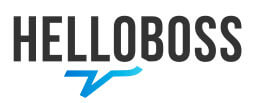
Objectifs
Learn how to automate and streamline day to day management and administration tasks and functions in your Windows Server Infrastructure.
This three-day course is a follow on course from the 10961B: Automating Administration with Windows PowerShell course. It is built on Windows Server 2012 R2 and Windows 8.1 and while it is specifically focussed on Windows PowerShell v4.0, is also relevant in v2.0 and v3.0 Windows PowerShell environments.
Expand and build upon the knowledge already acquired in course 10961B and focus on building more scalable and usable Windows PowerShell scripts for use in your organization by building your own Windows PowerShell tools. Learn about areas such as the creation of advanced functions, script modules, advanced parameters attributes and controller scripts. Also learn how to make your scripts more robust by learning about handling script errors and the analysis and debugging Windows PowerShell scripts. The course will also cover the use of Windows PowerShell cmdlets with .NET Framework as well as teaching how to configure your Windows Servers using Desired State Configuration and providing an understanding of Windows PowerShell workflow.
The detailed hands on labs and in depth content and learning will help remove manual tasks that you may currently have to perform as an Administrator, allowing you to make your own Windows PowerShell tools for automated, repeated, accurate management and provisioning of your Windows Server infrastructure.
At Course Completion
After completing this course, students will be able to:
Create Advanced Functions
Use Cmdlets and Microsoft .NET Framework in Windows PowerShell
Write Controller Scripts
Handle Script Errors
Use XML Data Files
Manage Server Configurations by Using Desired State Configuration
Analyze and Debugging Scripts
Understand Windows PowerShell Workflow
Contenu
Module 1: Creating Advanced Functions
In this module students will learn how to parameterize a command into an advanced function. It is designed to teach several key principles in a single logical sequence, by using frequent hands-on exercises to reinforce new skills.
Lessons
Converting a Command into an Advanced Function
Creating a Script Module
Defining Parameter Attributes and Input Validation
Writing Functions that use Multiple Objects
Writing Functions that Accept Pipeline Input
Producing Complex Function Output
Documenting Functions by using Content-Based Help
Supporting -Whatif and -Confirm
Lab: Converting a Command into an Advanced Function
Converting a Command into an Advanced Function
Lab: Creating a Script Module
Creating a Script Module
Lab: Defining Parameter Attributes and Input Validation
Defining Parameter Attributes and Input Validation
Lab: Writing Functions that use Multiple Objects
Writing Functions that use Multiple Objects
Lab: Writing Functions that Accept Pipeline Input
Writing Functions that Accept Pipeline Input
Lab: Producing Complex Function Output
Producing Complex Function Output
Lab: Documenting Functions by using Content-Based Help
Documenting Functions by using Content-Based Help
Lab: Supporting -Whatif and -Confirm
Supporting -Whatif and -Confirm
After completing this module, students will be able to:
Convert a Command into an Advanced Function
Create a Script Module
Define Parameter Attributes and Input Validation
Write Functions that use Multiple Objects
Writing Functions that Accept Pipeline Input
Produce Complex Function Output
Document Functions by using Content-Based Help
Support -Whatif and -Confirm
Module 2: Using Cmdlets and Microsoft .NET Framework in Windows PowerShell
Windows PowerShell provides commands that accomplish many of the tasks that you will need in a production environment. Sometimes, a command is not available but the .NET Framework provides an alternate means of accomplishing a task. Because Windows PowerShell is built on the .NET Framework, it is able to access those alternate means. In this module, you will learn how to discover and run Windows PowerShell commands, and how to use .NET Framework components from inside Windows PowerShell. These two techniques will provide you with the most flexibility and capability for accomplishing tasks in a production environment.
Lessons
Running Windows PowerShell Commands
Using Microsoft .NET Framework in Windows PowerShell
Lab: Using .NET Framework in Windows PowerShell
Using Static and Instance Members
After completing this module, students will be able to:
Run Windows PowerShell commands
Use Microsoft .NET Framework in Windows PowerShell
Module 3: Writing Controller Scripts
In this module, students will learn how to combine tools – advanced functions that perform a specific task – and a controller script that provides a user interface or automates a business process
Lessons
Understanding Controller Scripts
Writing Controller Scripts that Show a User Interface
Lab: Writing Controller Scripts that Display a User Interface
Write Functions to be Used in the Controller Script
Write a Controller Script that Implements a Text-Based Menu
After completing this module, students will be able to:
Understand Controller Scripts
Write Controller Scripts that show a User Interface
Module 4: Handling Script Errors
In this module, students will learn how to perform basic error handling in scripts. The focus will be about how to add error handling to existing tools, primarily as a time-saving mechanism (instead of having students write new tools). A side benefit of this approach is that it will help build the skills that you must have to analyze and reuse existing code written by someone else.
Lessons
Understanding Error Handling
Handling Errors in a Script
Lab: Handling Errors in a Script
Handling Errors in a Script
After completing this module, students will be able to:
Understand Error Handling
Handle Errors in a Script
Module 5: Using XML Data Files
In this module, students will learn how to read, manipulate, and write data in XML files. XML files provide a robust, yet straightforward way to store both flat and hierarchical data. XML files are more flexible than CSV, more accessible for small amounts of data than SQL Server, and easier to code against that Excel automation.
Lessons
Reading, Manipulating and Writing Data in XML
Lab: Reading, Manipulating and Writing Data in XML
Test the Provided Tools
Update an XML Inventory Document
After completing this module, students will be able to:
Reading, Manipulating and Writing Data in XML
Module 6: Managing Server Configurations by Using Desired State Configuration
In this module, students will learn how to write Desired State Configuration (DSC) configuration files, deploy those files to servers, and monitor servers’ configurations.
Lessons
Understanding Desired State Configuration
Creating and Deploying a DSC Configuration
Lab: Creating and Deploying a DSC Configuration
Write, Run and Push a DSC Configuration
After completing this module, students will be able to:
Understand Desired State Configuration
Create and Deploy a DSC Configuration
Module 7: Analyzing and Debugging Scripts
In this module, students will learn how to use native Windows PowerShell features to analyze and debug existing scripts. These skills are also useful when students have to debug their own scripts.
Lessons
Debugging in Windows PowerShell
Analyzing and Debugging and Existing Script
Lab: Analyzing and Debugging and Existing Script
Analyzing and Debugging and Existing Script
After completing this module, students will be able to:
Analyze and Debug a script
Module 8: Understanding Windows PowerShell Workflow
In this module, students will learn about the features of the Windows PowerShell Workflow technology.
Lessons
Understanding Windows PowerShell Workflow
After completing this module, students will be able to:
Understanding Windows PowerShell Workflow
Méthodes pédagogiques
Cours classique
Organizer
Elgon
Where does it take place?
Elgon
6
Rue d'Arlon Luxembourg
You could like it :

find out about all the networking events and trainings tailored for you!
find out about all the networking events and trainings tailored for you!






